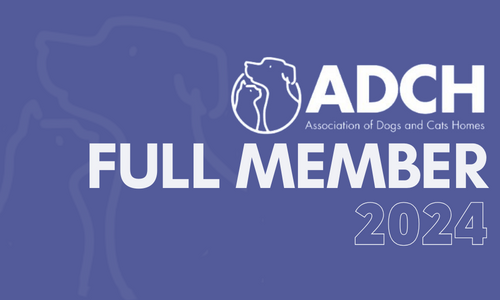GENERAL BIG PAW ADVICE
Adopting a giant or large breed rescue dog is a rewarding journey that can bring immense joy and companionship to your family. However, it also comes with a set of unique challenges that require understanding, patience, and preparedness to ensure a smooth transition for your new furry family member. Here are some general guidance tips to help you and your giant breed dog start off on the right paw:
1. Secure Their Environment
Check for escape routes: Inspect your garden or any outdoor space for potential escape routes. Remember, many rescue dogs are skilled at finding gaps in fencing or other security measures.
Outside the home, keep them on a lead: For at least the first 8 weeks, do not let your rescue dog off the lead in unsecured areas. Rescue dogs may react unpredictably to sounds, sudden movements, or other stimuli and may attempt to escape even from what seems like a secure enclosure. Seek out a secure dog field in your local area while you build your relationship.
2. Understand Their Background
Feeding habits: It's not uncommon for rescue dogs, especially those who have experienced neglect, to have developed survival behaviours, such as competing for food. To avoid stress and potential aggression:
- Feed them separately from other pets and away from family mealtimes.
- Consider offering smaller, more frequent meals (e.g., three times a day) to reassure them that food will always be available.
- Be patient if the dog exhibits food-hiding behaviours; this is a survival instinct from their time before adoption.
3. Introduce Slowly to New People and Pets
Limit new introductions: In the initial 4-8 weeks, it's advisable to limit the new faces your dog encounters. This approach helps avoid overwhelming them, giving you a better opportunity to observe their comfort levels and behaviour accurately. If your dog has a history of behavioural challenges, you will likely need to extend this period beyond 8 weeks.
Supervised interactions: When your dog does meet new people or animals, ensure they are on a lead and closely supervised. Do not leave your dog alone with children under 16, vulnerable adults, or other pets until you are confident in their ability to interact safely. Always proceed on the side of caution.
4. Building Trust and Safety
Establish routines: Consistency is key. Regular feeding times, walks, and gentle training sessions can help build trust and a sense of security for your dog.
Patience and positive reinforcement: Understand that your new dog may need time to adjust and might display behaviours rooted in their past experiences. Use positive reinforcement techniques, such as treats and praise, to encourage desired behaviours.
5. Professional Support
Seek professional advice: Saving Saints provides behavioural advice free of charge. Equally, we may be able to put you in touch with a behaviourist who could be more local to your area if you feel in-person interaction is vital.
6. Health Checks
Veterinary care: Ensure your dog has a thorough health check soon after adoption. This is crucial for identifying and addressing any health issues that may not have been apparent at the time of adoption.
7. Exercise and Mental Stimulation
Appropriate exercise: Large and giant breeds require consistent exercise to stay healthy, yet it's important to be aware of their boundaries, particularly during their adjustment period or if they have existing health issues. Despite their impressive size, giant breeds often lack the stamina one might expect, making it essential to gently and progressively build up their fitness level
Mental stimulation: Engage their minds with puzzle toys, training sessions, and interactive play to help prevent boredom and develop a stronger bond with them.
Remember, the key to a successful adoption is patience, understanding, and a gentle approach. By taking the time to understand and address the needs of your giant breed rescue dog, you're laying the foundation for a loving and lasting relationship.#
8. Avoiding Bloat Through Proper Meal Timing
8. Avoiding Bloat Through Proper Meal Timing One critical aspect of caring for large and giant breed dogs is managing their risk of bloat, a serious and potentially life-threatening condition. Bloat, or gastric dilatation-volvulus (GDV), can occur when the stomach fills with gas and twists, obstructing blood flow. To mitigate the risk:
- Meal Timing Around Exercise: Ensure your dog does not eat one hour before or after engaging in any exercise. This precaution helps prevent bloat by allowing the stomach to remain stable during physical activity and not exerted by the digestion process when the body's movements could potentially cause the stomach to twist.
- Incorporating this routine into your daily schedule is vital for the health and safety of your giant breed dog. Alongside regular health checks and monitoring for any signs of discomfort after eating or exercising, this practice is a key preventative measure against bloat. Always consult with your vet for personalised advice tailored to your dog’s specific health needs and conditions.



